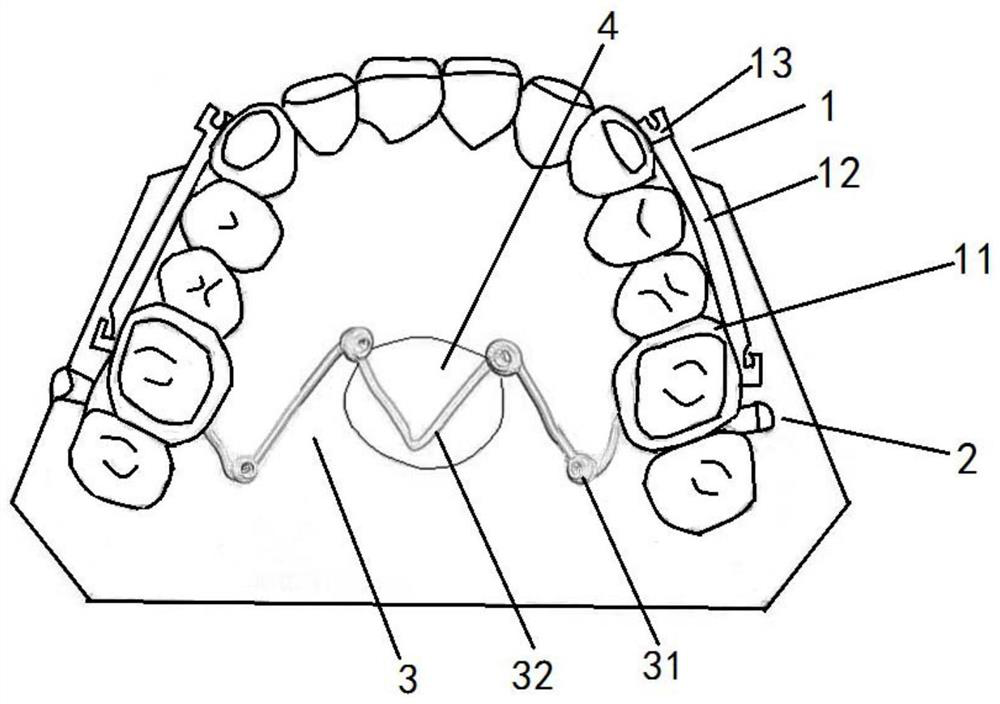Device for distally moving posterior dentition
A technology of moving the dentition, applied in the field of orthodontics, which can solve problems such as tooth ectropion
- Summary
- Abstract
- Description
- Claims
- Application Information
AI Technical Summary
Problems solved by technology
Method used
Image
Examples
Embodiment 1
[0031] A device for moving the posterior dentition distally, placed on the upper jaw, as in Figure 1~3 As shown, it includes a coupling body 1, an anchorage component 2, a push rod 3 and a base 4. The coupling body 1 includes a ring body 11 and a buccal connecting rod 12. The ring body 11 covers the first molars and canines, and the buccal connection The rod 12 is connected to the annular body 11 and is provided with a traction hook 13, and the anchorage component 2 is a planting nail located on the buccal side. The push rod 3 is located on the palatal side, and its two ends are connected to the annular body 11 covering the first molars. It is formed by bending a steel wire with a diameter of 0.8-1.0 mm, and includes four curved springs 31 and a V-shaped curved body 32 located on the midline of the face. The two coil springs 31 close to the molars on both sides are located in the distal part of the first molar, and the two coil springs 31 close to the midline are located in t...
Embodiment 2
[0034] A device for moving the posterior dentition distally, placed on the lower jaw, as in Figure 4 As shown, it includes coupling body 1, anchorage component 2 and lingual rod 5. Coupling body 1 includes annular body 11 and buccal connecting rod 12. The annular body 11 covers the first molars and canines. The body 11 is also provided with a traction hook 13, and the anchorage component 2 is a planting nail located on the buccal side. The two ends of the tongue bar 5 are respectively connected to the lingual side of the annular body 11 covering the first molars, the middle section of the tongue bar 5 is connected to the buccal side of the ring body 11 covering the canines, and the front section of the tongue bar 5 is located on the labial side of the anterior teeth area. And it can be covered with flexible materials to prevent damage to the lip side.
[0035]When the device in this embodiment moves the posterior dentition distally, the implant nail and the traction hook 13 ...
PUM
 Login to View More
Login to View More Abstract
Description
Claims
Application Information
 Login to View More
Login to View More - R&D
- Intellectual Property
- Life Sciences
- Materials
- Tech Scout
- Unparalleled Data Quality
- Higher Quality Content
- 60% Fewer Hallucinations
Browse by: Latest US Patents, China's latest patents, Technical Efficacy Thesaurus, Application Domain, Technology Topic, Popular Technical Reports.
© 2025 PatSnap. All rights reserved.Legal|Privacy policy|Modern Slavery Act Transparency Statement|Sitemap|About US| Contact US: help@patsnap.com



